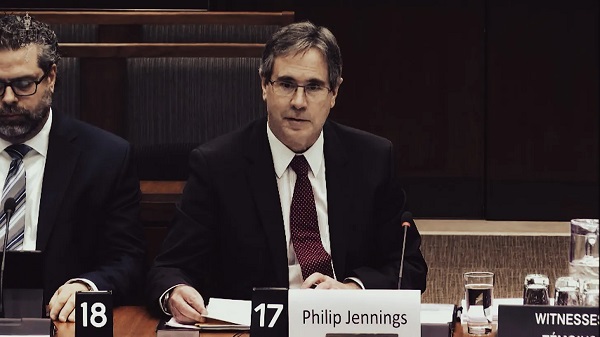Agriculture
Global food shortage? So what! Governments want to reduce the use of fertilizer anyway
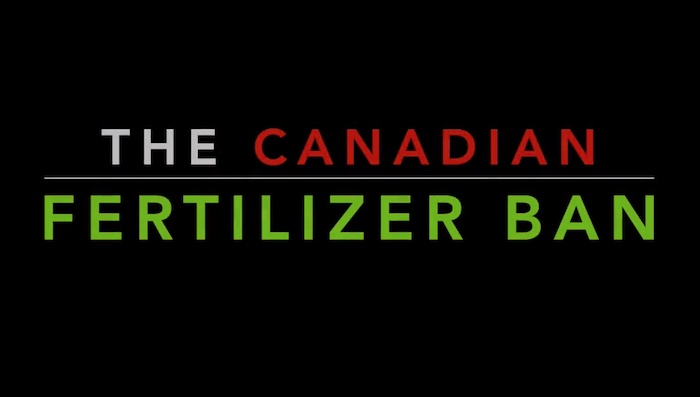
Once we acknowledge that over 80% of Canadians live in cities (and an even larger percentage seemingly don’t care much about poor people) it’s much easier to understand why the average Canadian isn’t far more upset with the government’s plan to coerce farmers to cut back on nitrogen fertilizer (otherwise known as plant food).
As complex as the formulas are for estimating the amount of pollution caused by fertilizer use, there’s actually a very simple way to understand this initiative. So let’s simplify. In order to help reduce Canada’s share (about 1%) of global emissions (which a ton of scientists swear is making the world hotter.. Sorry not hotter.. but more climate changy…which actually somehow means worse for everyone everywhere) the government is strongly urging farmers to use less fertilizer and thereby produce less food. The federal government estimates farming is responsible for about 10% of Canada’s emissions. Now that’s all aspects of farming including everything from using nitrogen fertilizer, to driving tractors, to presumably the horrible practice farmers share of breathing out every couple of seconds (more when they’re working hard). They estimate nitrogen fertilizer is responsible for about 18% of the emissions from farming (see below). In other words, this has to stop! I mean 18% of 10% of 1%.. how did we let this get so far away on us?
But here’s a question. Why would a farmer (who is a business operator) want to produce less food (which is the product farmers make and sell to feed the world)? Until now, farmers have always taken pride in producing the best possible crops using the lowest possible inputs (all the expenses from gas to seed to fertilizer, etc). Who wouldn’t? It’s how they make their money. Sounds like a tough sell. Perhaps that’s why governments are coming out with programs that will pay farmers not to farm quite so much. Right here in Alberta there’s a program that could pay an individual farmer up to $75,000.00 to cut back and be a better producer (government talk for producing less food) for people (not poor people who may starve in the coming months) fortunate enough to live 100 years from now.
Sure. That may sound a little offside when you consider global food shortages (another term for starving people) are expected to increase drastically in the coming months. You see the world is always somewhere between a little short of food and desperately short of food (depending on where you live you might feel more ‘desperate’ than inconvenienced). A simple minded person like myself might say “Why would we mess with this system that is feeding more people successfully than at any other time in world history?” Silly me. These guys are way beyond that simple thinking. That’s why the government isn’t asking farmers to consider what’s happening in the world right now (8 billion people need to eat). The government is asking farmers to consider what ‘might’ happen sometime in the future (it may sound a bit wacky when we say it out loud, but we’re pretty sure we can stop the climate from changing).
Apparently in order to get the climate under our control, we should be OK if we have to sacrifice a few million (or multiple hundred million) eaters (another word for people) in the next few years (could be starting in the next few months).
Relax Canadians. We can continue to fly across the country to go surfing in honour of the National Day for Truth and Reconciliation (I saw you there on the beach didn’t I?). We’re almost surely not going to miss a meal. Yah, we might have to double or triple down at the grocery store, but just think of that perfect summer day in the future! You’ll be so happy when your child gleefully watches your grandchild in their paper swim suit splash away in the wooden baby pool that’s in the driveway where the car used to be out front of the rental (now that we won’t be allowed to own cars anymore there’s going to be so much more room in our driveways!) Too bad you can’t travel to be there in person because you’re still getting that ESG score back up after that trip to see the kids a couple years back. Too bad you can’t use that cool social media app to see what they posted because you accidentally typed Turdo instead of Trudeau six months ago (stupid spellcheck).
Here’s to a bright future without the constant worry of oil and gas and nitrogen fertilizer! Just think. No more storms. No more pesky record high or low temperatures. And water levels remain constant year in and year out. It’s going to be awesome (for all the descendants of the people who get to eat in the next couple of years). Maybe we’ll build a statue to honour today’s fearless leaders who are so smart they have realized that it’s NOT THEIR JOB TO PROTECT THE PEOPLE WHO VOTE FOR THEM TODAY, but to CREATE A BETTER FUTURE FOR THE DESCENDANTS OF THOSE WHO CAN AFFORD TO SURVIVE in the future! We’ll certainly inscribe it with something like “These guys weren’t afraid to crack a few eggs to make this omelette. Hope you enjoy omelettes!” I think the perfect location to put that statue will be Davos. I hear it’s beautiful. Speaking of omelettes I hope there are still chickens in the future. I understand those little runts like farting as much as cows do and don’t kid yourself, it adds up!
I digress. This isn’t all about my wandering thoughts. As a journalistic endeavour I’d like to present both sides of thinking on this initiative. This should help teach those simple farmers and their university educated consultants how to farm better with less fertilizer and more crop rotation, etc. (I’m still amazed farmers didn’t already figure this out for themselves, but I bow to those worldly thinkers who make these plans on “our” behalf.) Anyway, a few thoughts from Agriculture Canada, followed by an informative (and entertaining) video presentation from a very well known Saskatchewan farmer.
—–
These statements have been pulled from the “Discussion Document: Reducing emissions arising from the application of fertilizer in Canada’s agriculture sector” on the federal government’s website. You can read it all here but I’ve pulled a couple of statements to help explain the brilliant future forward thinking that goes into plans like this. So please read about why our governments are telling farmers to grow less food to feed fewer people at a time of food shortages.
” In December 2020, the Government of Canada announced its Strengthened Climate Plan, “A Healthy Environment and a Healthy Economy.” It includes a number of measures affecting the agriculture sector, with a goal to reduce greenhouse gas (GHG) emissions, and increase carbon sequestration. This discussion paper addresses one of these measures: a national target to reduce absolute levels of GHG emissions arising from fertilizer application by 30% below 2020 levels by 2030.
Background
Agriculture was responsible for approximately 10% of Canada’s GHG emissions in 2019, or 73 Mt CO2, which come from three main sources: enteric fermentation (24Mt), crop production (24Mt) , and on-farm fuel use (14Mt) (National Inventory Report, 2021.) Based on current data for 2019, emissions from synthetic fertilizers accounted for 12.75 Mt. While many players in the agriculture sector are already working to improve nutrient management and reduce emissions associated with crop production, fertilizers are responsible for a growing share of overall agricultural emissions.
Since the release of Canada’s Strengthened Climate Plan, the Government of Canada has moved swiftly to implement its key aspects in order to create jobs, grow the economy and protect the planet. In April 2021, in line with its obligations under the Paris Agreement, the Government of Canada announced a new GHG emissions reduction target of 40-45% below 2005 levels by 2030. This target, along with other developments such as the passage of the Canadian Net Zero Emissions Accountability Act, which enshrines in legislation Canada’s commitment to achieve net-zero emissions across the Canadian economy by 2050, highlights the need to reduce absolute GHG emissions across all economic sectors, including agriculture.
—–
This part is really interesting because it shows how fertilizer use is far more intense in Quebec and the Maritime provinces, though the bulk of the reductions will have to take place in Western Canada anyway. You know, because.. even though western farmers use less, there are more of them so they actually use more, plus they’re farther away from Ottawa and have less representation per capita.. what was I saying?
Regional Variations
Fertilizer induced emissions are not spatially or temporally uniform across Canadian agricultural landscapes. The seasonal pattern of N2O emissions reflects the interaction between soil temperature, soil water and nitrate availability. Drier regions of the Prairies have much lower N2O losses than the moister regions of Eastern Canada. N2O emissions per hectare are greater in Eastern Canada as a result of the wetter climate and greater N application rates. However, the much larger land area in the Prairies vs. Eastern Canada results in greater total N fertilizer application in the Prairies and thus the total emissions are much higher in this region.
It is important to note that the strategies required to achieve the 30% N2O emission reduction objective will vary across the country as the emissions reduction potential is impacted by biophysical factors (soil type, soil humidity, climate), crop types, and climate change impacts.Footnote3 (OH DEAR GOD CLIMATE CHANGE IS CAUSING MORE CLIMATE CHANGE!)
Figure 3 illustrates the differences between the fertilizer induced emissions patterns across the country, showing N2O emissions per hectare in 2018. The intensity of fertilizer emissions (emissions per ha) is higher east of Saskatchewan, indicating that more fertilizer is applied per hectare, resulting in more direct emissions on a per-acre basis. In addition, wetter conditions in the East result in more direct and indirect emissions.

—–
This part clearly explains how regions that use less fertilizer may be asked to cut back even more than regions using a lot more per capita, because.. because. Also it encourages farmers to stop the nasty habit of pouring fertilizer out randomly all over the place and then grabing a pinch and throwing it over their shoulder. For some reason it still hasn’t addressed when farmers (and their family members) exhale, which is also more intense in heavily populated urban areas in the east (likely because it’s not N2O, but CO2).
Objectives of the National Target for Fertilizer Emissions
In order to achieve a concrete reduction in overall emissions, the target is established relative to absolute emissions rather than emissions intensity. The Government of Canada has been clear that the objective of the national target for fertilizers is to reduce emissions, and that the primary method to achieve this is not to establish a mandatory reduction in fertilizer use that isn’t linked to improved efficiency and maintaining or improving yields. Rather, the goal is to maximize efficiency, optimize fertilizer use, encourage innovation, and to work collaboratively with the agriculture sector, partners and stakeholders in identifying opportunities that will allow us to successfully reach this target.
—–
OK. I don’t expect you were able to understand most of that. But they did their best to explain to those of us who aren’t as good as planning future world scenarios as they are. Now that you see the way our fearless leaders think. But what about the rest of us? In the interest of journalistic integrity we’ll show you what one simple farmer thinks of being urged to use less fertilizer. If you haven’t seen QDM before, please note he sometimes uses very descriptive adjectives (sometimes he turns them into verbs and nouns too) which might be a tad harsh for the younger folk. Please enjoy with a grain of salt and a malted beverage. When he’s finished you can decide for yourself whether you think it’s a great idea to cut back on food production by using less fertilizer.
Agriculture
Health Canada pauses plan to sell unlabeled cloned meat

From LifeSiteNews
Health Canada has indefinitely paused its plan to allow unlabeled cloned meat in grocery stores after thousands of Canadians, prominent figures, and industry leaders condemned the move.
Health Canada is pausing its plan to put unlabeled cloned meat in Canadian grocery stores, following public outcry.
In a November 19 update on its website, Health Canada announced an indefinite suspension of the decision to remove labels from cloned meat products after thousands of Canadians condemned the plan online.
“The Government of Canada has received significant input from both consumers and industry about the implications of this potential policy update,” the publication read. “The Department has therefore indefinitely paused the policy update to provide time for further discussions and consideration,” it continued, adding, “Until the policy is updated, foods made from cloned cattle and swine will remain subject to the novel food assessment.”
In late October, Health Canada quietly approved removing labels from foods derived from somatic cell nuclear transfer (SCNT) clones and their offspring. As a result, Canadians buying meat from the grocery store would have had no way of knowing if the product was cloned meat.
Many researchers have documented high rates of cloning failure, large offspring syndrome (LOS), placental abnormalities, early death, and organ defects in cloned animals. The animals are also administered heavy doses of antibiotics due to infections and immune issues.
Typically, the offspring of cloned animals, rather than the cloned animals themselves, are processed for human consumption. As a result, researchers allege that the health defects and high drug use does not affect the final product.
However, there are no comprehensive human studies on the effects of eating cloned meat, meaning that the side-effects for humans are unknown.
News of the plan spread quickly on social media, with thousands of Canadians condemning the plan and promising to switch to local meat providers.
“By authorizing the sale of meat from cloned animals without mandatory labeling or a formal public announcement, Health Canada risks repeating a familiar and costly failure in risk communication. Deeply disappointing,” food policy expert and professor at Dalhousie University Sylvain Charlebois wrote on X.
"By authorizing the sale of meat from cloned animals without mandatory labeling or a formal public announcement, Health Canada risks repeating a familiar and costly failure in risk communication. Deeply disappointing."
More on this week's Food Professor Podcast! https://t.co/UZTIcQzUN3
— The Food Professor (@FoodProfessor) October 30, 2025
Likewise, Conservative MP Leslyn Lewis warned, “Health Canada recently decided that meat from cloned animals and their offspring no longer needs a special review or any form of disclosure.”
“That means, soon you could buy beef or pork and have no idea how it was bred,” she continued. “Other countries debate this openly: the EU has considered strict labelling, and even the U.S. has admitted that cloned-offspring meat is circulating.”
“But here in Canada, the public wasn’t even told. This is about informed choice,” Lewis declared. “If government and industry don’t have to tell us when meat comes from cloned animals, then Canadians need to ask a simple, honest question: What else are we not being told?”
Health Canada recently decided that meat from cloned animals and their offspring no longer needs a special review or any form of disclosure. That means, soon you could buy beef or pork and have no idea how it was bred.
Other countries debate this openly: the EU has considered… pic.twitter.com/zCnqJOpvf3
— Dr. Leslyn Lewis (@LeslynLewis) November 14, 2025
Likewise, duBreton, a leading North American supplier of organic pork based out of Quebec, denounced the move, saying, “Canadians expect clarity, transparency, and meaningful consultation on issues that directly touch their food supply. As producers, we consider it our responsibility and believe our governing food authorities should too.”
According to a survey conducted by duBreton, 74 percent of Canadians believe that “cloned meat and genetic editing practices have no place in farm and food systems.”
Agriculture
Federal cabinet calls for Canadian bank used primarily by white farmers to be more diverse
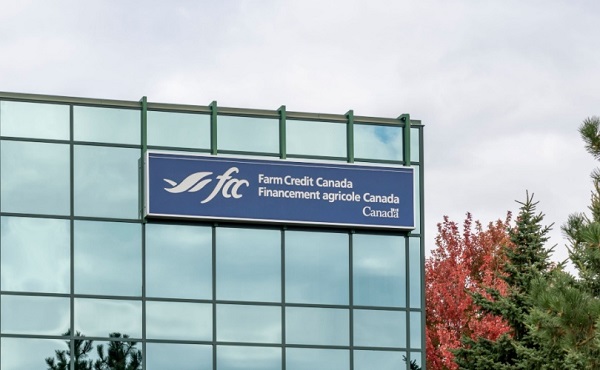
From LifeSiteNews
A finance department review suggested women, youth, Indigenous, LGBTQ, Black and racialized entrepreneurs are underserved by Farm Credit Canada.
The Cabinet of Prime Minister Mark Carney said in a note that a Canadian Crown bank mostly used by farmers is too “white” and not diverse enough in its lending to “traditionally underrepresented groups” such as LGBT minorities.
Farm Credit Canada Regina, in Saskatchewan, is used by thousands of farmers, yet federal cabinet overseers claim its loan portfolio needs greater diversity.
The finance department note, which aims to make amendments to the Farm Credit Canada Act, claims that agriculture is “predominantly older white men.”
Proposed changes to the Act mean the government will mandate “regular legislative reviews to ensure alignment with the needs of the agriculture and agri-food sector.”
“Farm operators are predominantly older white men and farm families tend to have higher average incomes compared to all Canadians,” the note reads.
“Traditionally underrepresented groups such as women, youth, Indigenous, LGBTQ, and Black and racialized entrepreneurs may particularly benefit from regular legislative reviews to better enable Farm Credit Canada to align its activities with their specific needs.”
The text includes no legal amendment, and the finance department did not say why it was brought forward or who asked for the changes.
Canadian census data shows that there are only 590,710 farmers and their families, a number that keeps going down. The average farmer is a 55-year-old male and predominantly Christian, either Catholic or from the United Church.
Data shows that 6.9 percent of farmers are immigrants, with about 3.7 percent being “from racialized groups.”
National census data from 2021 indicates that about four percent of Canadians say they are LGBT; however, those who are farmers is not stated.
Historically, most farmers in Canada are multi-generational descendants of Christian/Catholic Europeans who came to Canada in the mid to late 1800s, mainly from the United Kingdom, Ireland, Ukraine, Russia, Italy, Poland, the Netherlands, Germany, and France.
-

 Alberta1 day ago
Alberta1 day agoFrom Underdog to Top Broodmare
-
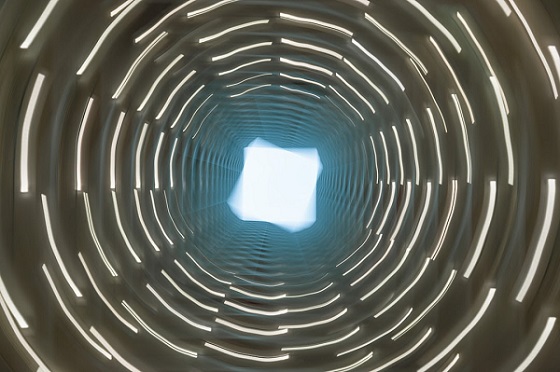
 Opinion16 hours ago
Opinion16 hours agoLandmark 2025 Study Says Near-Death Experiences Can’t Be Explained Away
-

 Focal Points17 hours ago
Focal Points17 hours agoSTUDY: TikTok, Instagram, and YouTube Shorts Induce Measurable “Brain Rot”
-

 Alberta15 hours ago
Alberta15 hours agoRed Deer’s Jason Stephan calls for citizen-led referendum on late-term abortion ban in Alberta
-
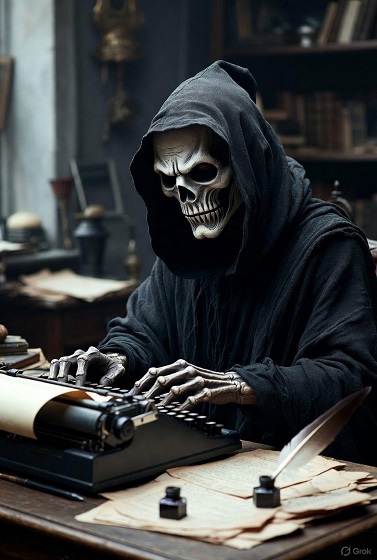
 Health18 hours ago
Health18 hours agoTens of thousands are dying on waiting lists following decades of media reluctance to debate healthcare
-

 Indigenous14 hours ago
Indigenous14 hours agoIndigenous activist wins landmark court ruling for financial transparency
-

 Alberta13 hours ago
Alberta13 hours agoCarney forces Alberta to pay a steep price for the West Coast Pipeline MOU
-

 Business12 hours ago
Business12 hours agoMan overboard as HMCS Carney lists to the right



